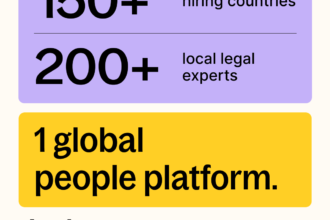Managing a global workforce comes with unique challenges, from compliance with international labor laws to handling multi-currency payroll. As businesses expand across borders, HR and payroll teams must navigate cultural differences, tax regulations, and workforce expectations to ensure smooth operations. In this blog, we’ll explore key strategies for managing a global workforce efficiently.
Key Challenges in Managing a Global Workforce
1. Compliance with Local Labor Laws
Each country has distinct employment regulations, including work hours, benefits, termination policies, and tax laws. HR teams must stay updated on legal changes to avoid compliance risks.
2. Multi-Currency Payroll Management
Paying employees in different currencies can be complex due to fluctuating exchange rates and varying tax structures. Businesses need reliable global payroll solutions to ensure accurate and timely salary disbursements.
3. Cultural and Communication Differences
Managing employees across different regions requires understanding cultural norms, communication styles, and work ethics. HR teams should foster inclusivity and provide training for cross-cultural collaboration.
4. Employee Benefits and Expectations
Workplace benefits vary across countries. While some regions prioritize healthcare and retirement plans, others focus on paid leave and work-life balance. Offering localized benefits improves employee satisfaction.
5. Remote Work and Hybrid Work Models
With the rise of remote work, companies must develop policies that accommodate different time zones, ensure data security, and maintain employee engagement.
Tips for HR and Payroll Success in a Global Workforce
1. Partner with an Employer of Record (EOR)
An EOR helps businesses hire and manage employees in different countries without setting up legal entities. They handle payroll, compliance, and benefits, ensuring smooth workforce management.
2. Use Global Payroll Solutions
Invest in a payroll platform that supports multi-currency payments, tax compliance, and automated salary processing to streamline operations.
3. Develop a Strong Onboarding Process
Ensure new hires receive comprehensive training on company policies, local labor laws, and cultural expectations. A well-structured onboarding program boosts retention and engagement.
4. Implement HR Technology and Automation
HR software can automate administrative tasks like payroll processing, compliance tracking, and employee record management, reducing manual workload.
5. Foster Employee Engagement and Inclusion
Encourage open communication, recognize employee achievements, and create diversity and inclusion initiatives to build a positive global workplace culture.
Conclusion
Successfully managing a global workforce requires a strategic approach that balances compliance, payroll efficiency, and employee engagement. By leveraging HR technology, working with EOR services, and prioritizing cultural inclusivity, businesses can build a strong international team while maintaining smooth operations.







